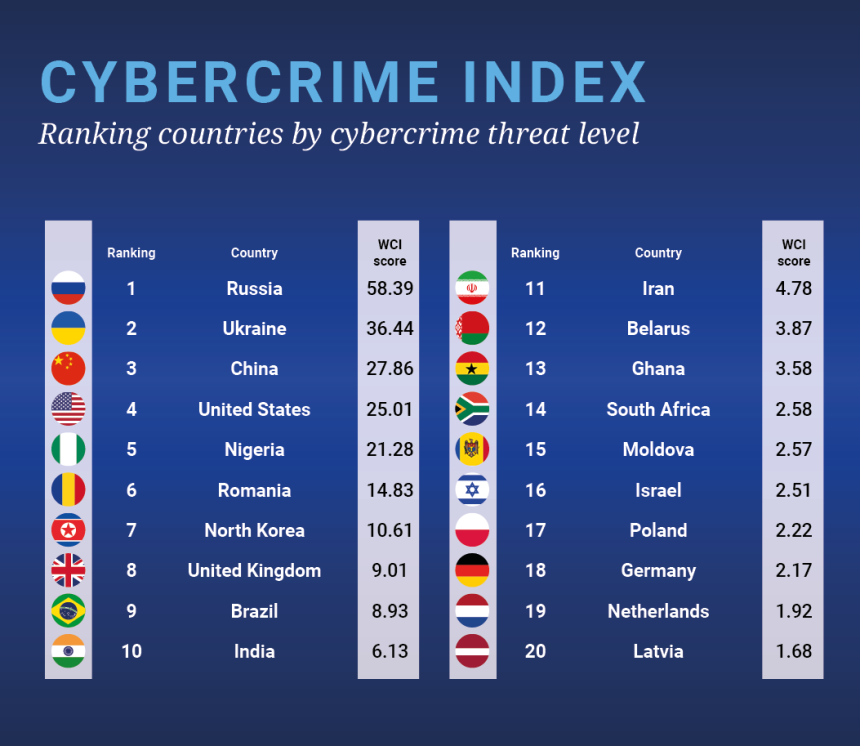The Centre's Professor Ridhi Kashyap has compiled the first ever ‘World Cybercrime Index’, alongside other researchers from the University of Oxford's Department of Sociology, Monash University and Sciences Po. The Index identifies the globe’s major cybercrime hotspots by ranking the most significant sources of cybercrime at a national level.
Published today in PLOS One, the Index shows that the threat of cybercrime is not evenly distributed worldwide. In fact, a relatively small number of countries house the greatest cybercriminal threat - Russia tops the list, followed by Ukraine, China, the USA, Nigeria, and Romania. The UK comes in at number eight.

The data that underpins the Index was gathered through a survey of 92 leading cybercrime experts from around the world who are involved in cybercrime intelligence gathering and investigations. The survey asked the experts to consider five major categories of cybercrime, nominate the countries that they consider to be the most significant sources of each of these types of cybercrime, and then rank each country according to the impact, professionalism, and technical skill of its cybercriminals.
Read more in these University of Oxford and Department of Sociology news stories.
The World Cybercrime Index has been developed as a joint partnership between the University of Oxford and UNSW Canberra and has also been funded by CRIMGOV, a European Union-supported project based at the University of Oxford and Sciences Po.



